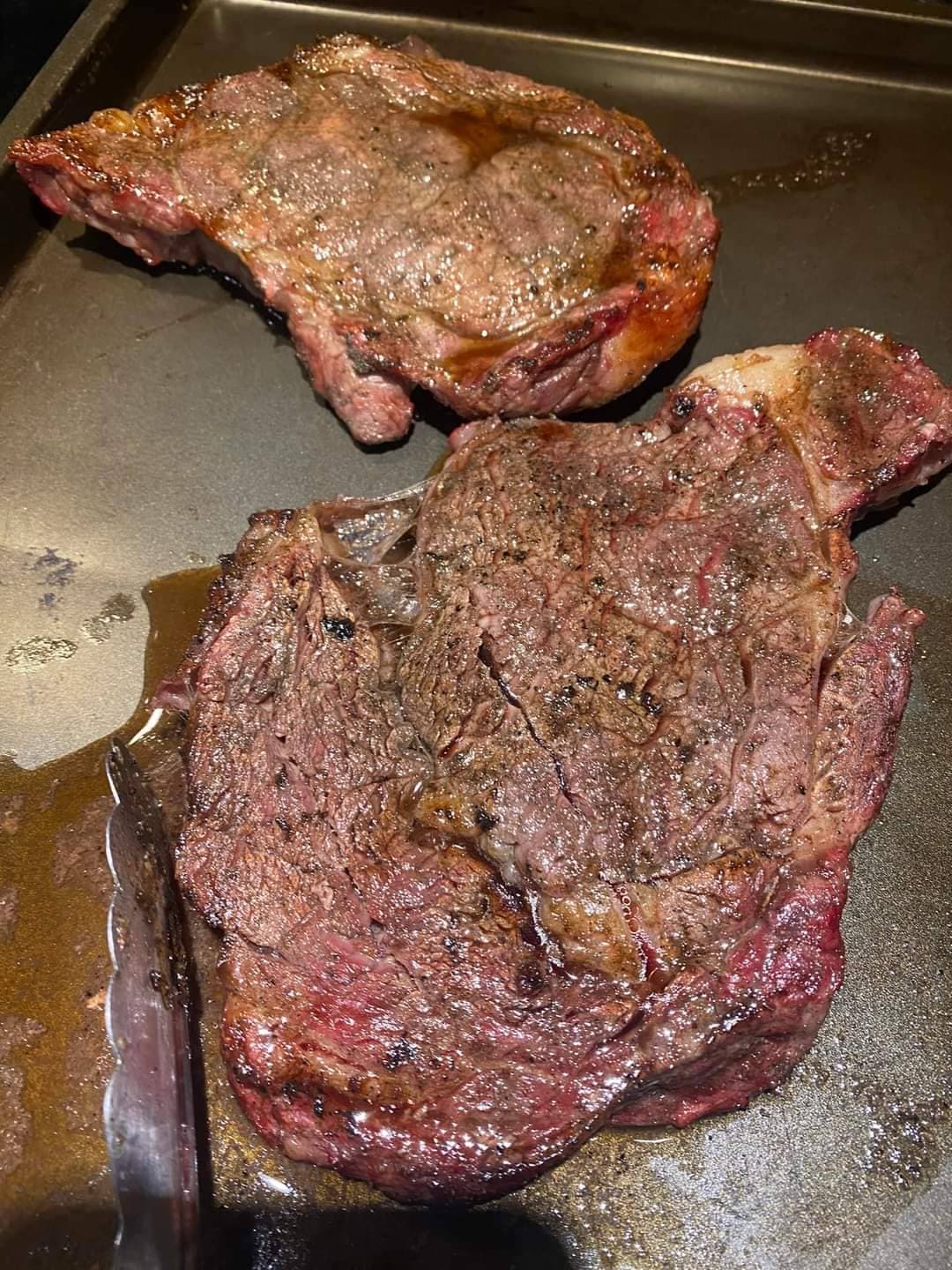Cooking the Perfect Ribeye Steak, Indulge in the sublime taste and juiciness of a perfectly cooked ribeye steak. Whether you’re a seasoned chef or a novice in the kitchen, this comprehensive guide will teach you the secrets to grilling or pan-searing a mouthwatering ribeye steak that will leave your taste buds dancing. Let’s dive into the world of ribeye steak preparation and cooking.
What Is a Ribeye Steak? Ribeye steak, also known as “rib eye” or “rib steak,” is a prime cut of beef sourced from the rib section of the cow. It’s celebrated for its exceptional marbling, which infuses the meat with rich flavor and tenderness. Preparing a ribeye steak is an art form, and we’ll walk you through the steps to achieve steakhouse-quality results in the comfort of your own kitchen.
Choosing the Perfect Ribeye: Selecting the right ribeye steak is crucial for a remarkable dining experience. Look for these factors when purchasing:
- Marbling: Opt for ribeye steaks with ample marbling, as the interwoven fat enhances the steak’s taste and juiciness.
- Thickness: Choose steaks that are at least 1.5 inches thick for even cooking.
- Color: Seek out steaks with a vibrant red color and a creamy, white marbling pattern.
- Grade: Higher grades like Prime and Choice are preferred for superior flavor and tenderness.
Cooking Methods: Ribeye steaks can be cooked using various methods, but two popular options are grilling and pan-searing:
Grilling:
- Preheat your grill to high heat.
- Season the steak generously with kosher salt and freshly ground black pepper.
- Grill the steak over high heat for about 3-4 minutes per side for medium-rare, adjusting for your preferred doneness.
- Let the steak rest for a few minutes before slicing to allow the juices to redistribute.
Pan-Searing:
- Preheat a cast-iron skillet over high heat until it’s smoking hot.
- Season the steak as mentioned earlier.
- Add a high smoke-point oil (e.g., vegetable or grapeseed) to the skillet.
- Place the steak in the skillet and sear for 2-3 minutes per side, then finish in a preheated oven at 400°F (200°C) for a few minutes until desired doneness is achieved.
- Rest the steak before slicing.
Serving Suggestions: Pair your succulent ribeye steak with complementary side dishes like garlic mashed potatoes, grilled asparagus, or a crisp garden salad. Don’t forget to top your steak with a pat of herb butter or a drizzle of red wine reduction for an extra layer of flavor.
Cooking the perfect ribeye steak is a culinary journey that rewards your palate with unmatched flavor and tenderness. With the right selection, preparation, and cooking techniques, you’ll master the art of preparing ribeye steaks that rival those found in upscale steakhouses. Elevate your dining experience and savor the magic of a well-cooked ribeye steak today!
Ribeye steak is a popular and delicious cut of beef known for its rich marbling and robust flavor. Here’s a general overview of the nutrition content you can expect from a typical 3.5-ounce (100-gram) cooked ribeye steak:
- Calories: Approximately 250-300 calories.
- Protein: A 3.5-ounce serving provides about 25-30 grams of protein, making it an excellent source of this essential macronutrient.
- Total Fat: Ribeye steak is relatively high in fat, with around 20-25 grams of total fat in a 3.5-ounce serving.
- Saturated Fat: This cut is known for its marbling, which contributes to its rich flavor but also means it has a higher saturated fat content. You can expect around 8-10 grams of saturated fat in a 3.5-ounce serving.
- Cholesterol: Ribeye steak contains a significant amount of cholesterol, typically around 70-80 milligrams per 3.5-ounce serving.
- Vitamins and Minerals: It’s a good source of essential nutrients like vitamin B12, iron, zinc, and phosphorus.
While ribeye steak is a flavorful and protein-rich choice, it’s also important to consume it in moderation due to its higher fat and saturated fat content. It’s a great option for occasional indulgence or special occasions.
To make your ribeye steak meal healthier, consider these tips:
- Trim Excess Fat: Trim any visible excess fat from the steak before cooking to reduce the saturated fat content.
- Portion Control: Enjoy ribeye steak in moderation and consider smaller portion sizes.
- Grill or Broil: Choose cooking methods like grilling or broiling that allow excess fat to drip away from the steak.
- Serve with Vegetables: Pair your ribeye steak with a variety of vegetables to create a balanced meal.
- Leaner Cuts: If you’re concerned about fat content, consider leaner cuts of beef, like sirloin or tenderloin, which have lower fat levels.
Remember that individual nutritional values can vary based on factors such as the specific cut of ribeye, cooking method, and portion size. It’s always a good idea to check nutrition labels or consult with a registered dietitian for precise dietary information tailored to your needs.

